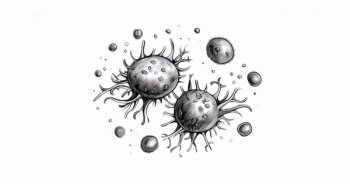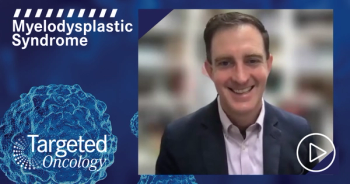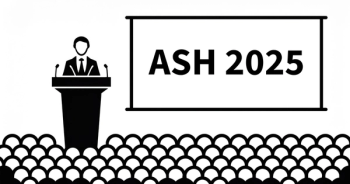
Managing Treatment for IDH2-Mutated AML
Courtney D. DiNardo, MD, MSCE:The majority of older patients with AML really have inferior outcomes and poor outcomes with standard therapies. And so, the importance of clinical trials can’t be overestimated. And there are several different clinical trials right now available for patients with anIDH2mutation. In newly diagnosed, older, or otherwise unfit AML patients, there’s Vidaza (azacitidine) in combination with an IDH2 inhibitor under evaluation. For younger or fit patients, there’s the standard intensive chemotherapy with an IDH2 inhibitor ongoing. And there are several combination studies either opening now or soon to be open of the IDH2 inhibitor with various different combinations. For instance, patients withFLIT3mutations also with the addition of the FLIT3 inhibitor, and so on and so forth.
This patient’s response to intensive AML therapy is unfortunately rather typical. And that is, we were able to obtain a remission. We do that the majority of the time. Patients are able to obtain a remission, although a lot of times that is short-lived and patients within 6 months to a year after therapy unfortunately relapse. And so, it tells us that we need better options for our relapsed patients but we also need better upfront combination therapies for patients so that they have more durable and lasting remissions in the first place. So, that’s hopefully where the impact of these IDH2 inhibitors will be seen in the future. The IDH2 inhibitor was approved as a single agent in the relapsed/refractory setting, but my hope for the future is that it will be able to be added with combination therapies in the frontline setting and lead to improved more durable first-line remission.
In a patient who receives standard intensive chemotherapy and who has relapsed quickly after cytarabine-based chemotherapy, giving more intensive therapy generally is not warranted. They’ve proven themselves to be cytarabine-refractory. And so, hypomethylating agent therapies, things like Vidaza or Dacogen, or decitabine, these are available and do provide responses in some patients, often not particularly durable. Or, now forIDH2-mutated patients, the FDA approved enasidenib, or now IDHIFA, which is available and is an important consideration for these patients, for sure.
Transcript edited for clarity.
Case: A 65-Year-Old Woman withIDH2-Mutated AML
November 2017
- A 65-year-old female was diagnosed with AML, normal cytogenetics;IDH2R140,RUNX1,andDNMT3Amutations
- 7+3 induction chemotherapy was initiated
- Her treatment course was complicated by mucositis and febrile neutropenia
- After resolution of her complications, she received 2 cycles of intermediate-dose cytarabine consolidation
May 2018
- Now, 6 months after her initial diagnosis, she presents with fatigue, aches, and gum bleeding
- Labs: leukocytosis, 20% circulating myeloblasts, ANC 450 cells/mL
- Bone marrow biopsy: hypercellular 80% blast, normal cytogenetics
- NGS: mutations inIDH2,RUNX1,andDNMT3A








































